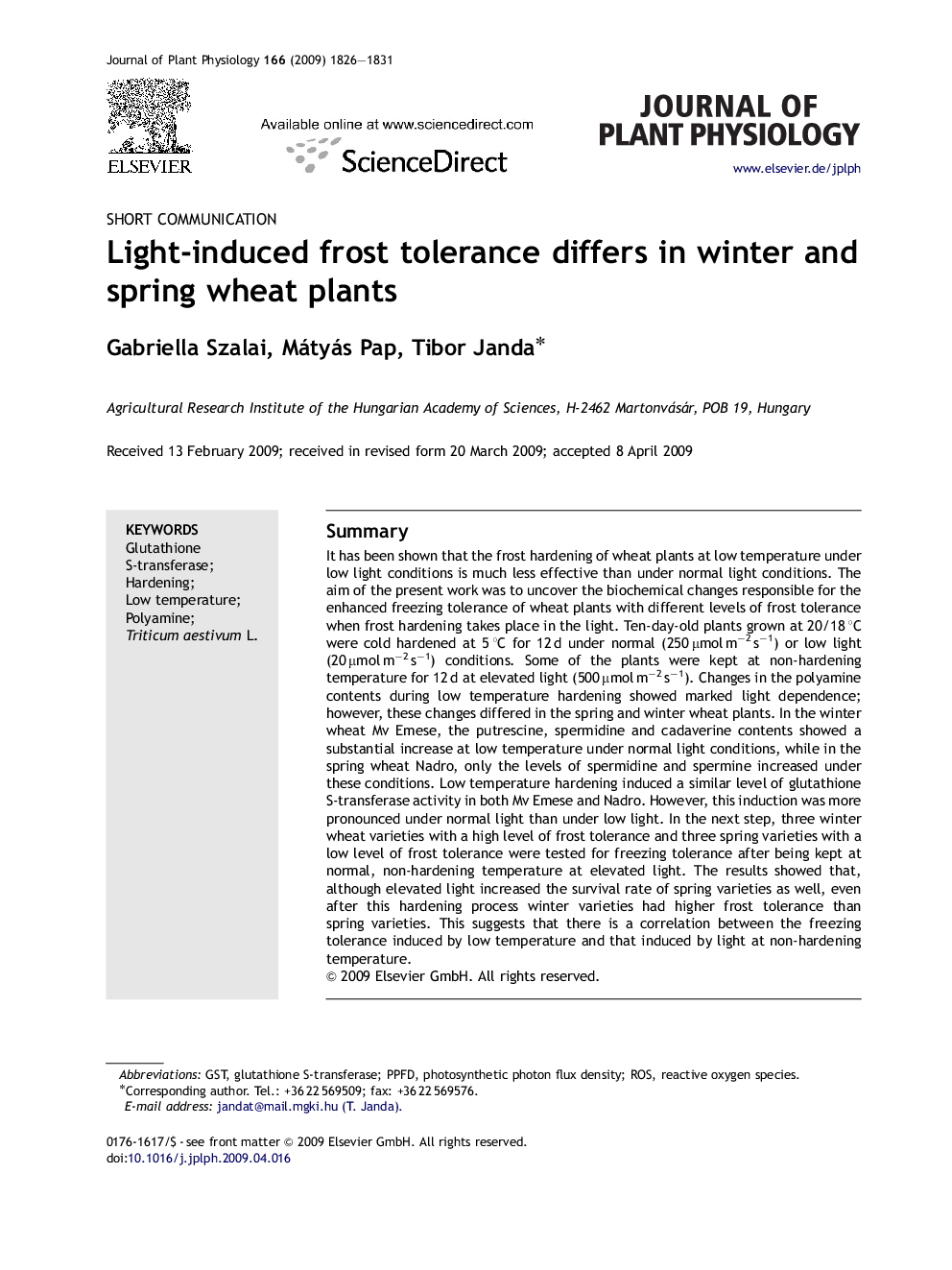| کد مقاله | کد نشریه | سال انتشار | مقاله انگلیسی | نسخه تمام متن |
|---|---|---|---|---|
| 2057873 | 1076054 | 2009 | 6 صفحه PDF | دانلود رایگان |

SummaryIt has been shown that the frost hardening of wheat plants at low temperature under low light conditions is much less effective than under normal light conditions. The aim of the present work was to uncover the biochemical changes responsible for the enhanced freezing tolerance of wheat plants with different levels of frost tolerance when frost hardening takes place in the light. Ten-day-old plants grown at 20/18 °C were cold hardened at 5 °C for 12 d under normal (250 μmol m−2 s−1) or low light (20 μmol m−2 s−1) conditions. Some of the plants were kept at non-hardening temperature for 12 d at elevated light (500 μmol m−2 s−1). Changes in the polyamine contents during low temperature hardening showed marked light dependence; however, these changes differed in the spring and winter wheat plants. In the winter wheat Mv Emese, the putrescine, spermidine and cadaverine contents showed a substantial increase at low temperature under normal light conditions, while in the spring wheat Nadro, only the levels of spermidine and spermine increased under these conditions. Low temperature hardening induced a similar level of glutathione S-transferase activity in both Mv Emese and Nadro. However, this induction was more pronounced under normal light than under low light. In the next step, three winter wheat varieties with a high level of frost tolerance and three spring varieties with a low level of frost tolerance were tested for freezing tolerance after being kept at normal, non-hardening temperature at elevated light. The results showed that, although elevated light increased the survival rate of spring varieties as well, even after this hardening process winter varieties had higher frost tolerance than spring varieties. This suggests that there is a correlation between the freezing tolerance induced by low temperature and that induced by light at non-hardening temperature.
Journal: Journal of Plant Physiology - Volume 166, Issue 16, 1 November 2009, Pages 1826–1831